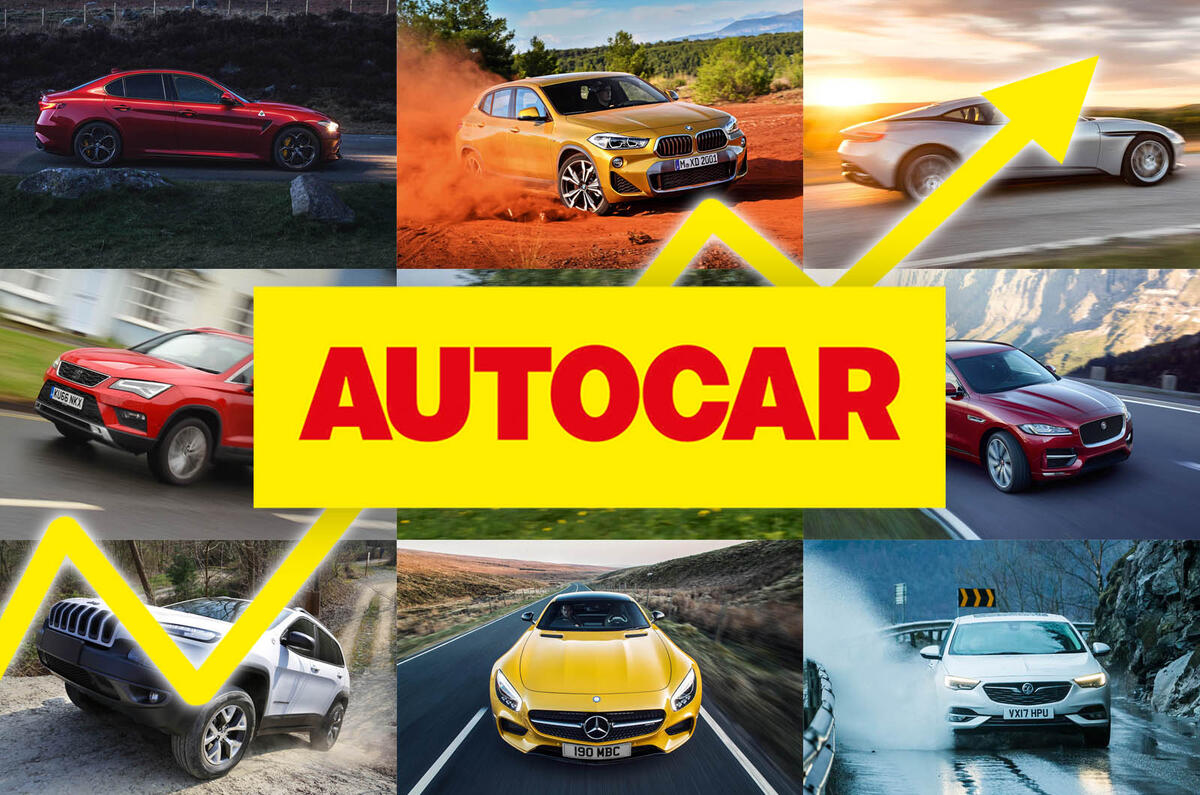The total number of new car registrations in 2017 reached 2,540,617 million, down 5.7% on the record year of 2016.
Given the current economic and political uncertainty, that is a fairly encouraging result, although a further fall of 5% is expected in 2018.
From then on, the industry expects the market to stabilise at around 2.4 million registrations per year. Long-term forecasts, meanwhile, are less clear and hinge on the results of Brexit.
ALFA ROMEO - UP
- 2016 market share: 0.18%
- 2017 market share: 0.20%
Alfa Romeo has been drinking in the last chance saloon for so long that the place is running dry. The Stelvio is Alfa’s last shot: if that doesn’t do the trick, the car maker may need a new owner.
ASTON MARTIN - UP
- 2016 market share 0.03%
- 2017 market share: 0.06%
Global sales are up around 30%, thanks to the DB11. The company is making a profit, and there is talk of floating it on the stock exchange. If you can’t afford the cars, how about buying a bit of the company?
Click here to see the top 10 best-selling cars in Britain

AUDI - UP
- 2016 market share: 6.58%
- 2017 market share: 6.88%
Audi is now slightly ahead of BMW in the UK for the first time. This is mostly due to sales of crossovers and, in particular, the Q2.
- 2016 market share: 0.07%
- 2017 market share: 0.07%
Bentley’s rise has temporarily stalled: rising Bentayga sales are only compensating for falling Continental GT registrations. The imminent new Conti GT has work to do.









































Join the debate
Add your comment
I’ve just realised JLR are
I’ve just realised JLR are only 2% behind BMW in terms of market share. Roll on the Road Rover, Defender, new Evoque, new XJ, etc
Premium car makers
Looking at Alfa's numbers I really fear for them. The problem they have is that although their latest offerings are the best in decades they are not no viewed in the same light as the German big 3 + Volvo + JLR. I suspect FCA will try and sell them soon, Jaguar might be a good partner for them as both brands need more volume in the sedan market.
Jaguar is heading in the right direction. Add in a few more SUV's and they will do well. Lexus are really not making an impression these days and DS has been shown up to be about as strong as Lincoln in the US. As for BMW well they need to radically improve their interiors or face loosing more ground. There interiors aren't a match for anyone these days.
Vauxhall
Reaping what they sowed over almost 30 years. Made mediocre products, relied on past reputation, marketed them really badly, waited for Asian brands to catch up with styling, and then tried to work out what went wrong???? Products in 80s were mostly desirable, so who determined the strategy after this?
Bizarre. Were they actively trying to fail over a very long period? even if GM cut costs they could still have been styled well?
PSA are heading the same way, with exactly the same issues as Vauxhall, but over less years. But with the added “bonus” of legendary crap build quality.
Honda are designing their way to oblivion for unknown reasons.
Jaguar need the SUVs to work, the saloons don’t and won’t sell until the styling is changed inside and out.
BMW will stagnate as the styling on most is just not attractive, and the interiors are terrible.
VW margins are terrible, don’t understand why. Do Audi, Seat, Skoda, etc pay their share of platform and drivetrain development?
Paul Dalgarno wrote:
So in summary, every car maker is rubbish or doing rubbish, as far as you are concerend!
Particularly amusing is the comment that BMW "interiors are terrible". I tried out a new 5-series recently, and its interior build, materials and ergonmics have to be among the best currently on the market. Seems like we have different understandings of the word terrible.